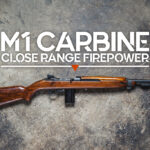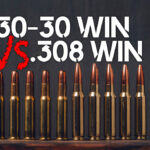
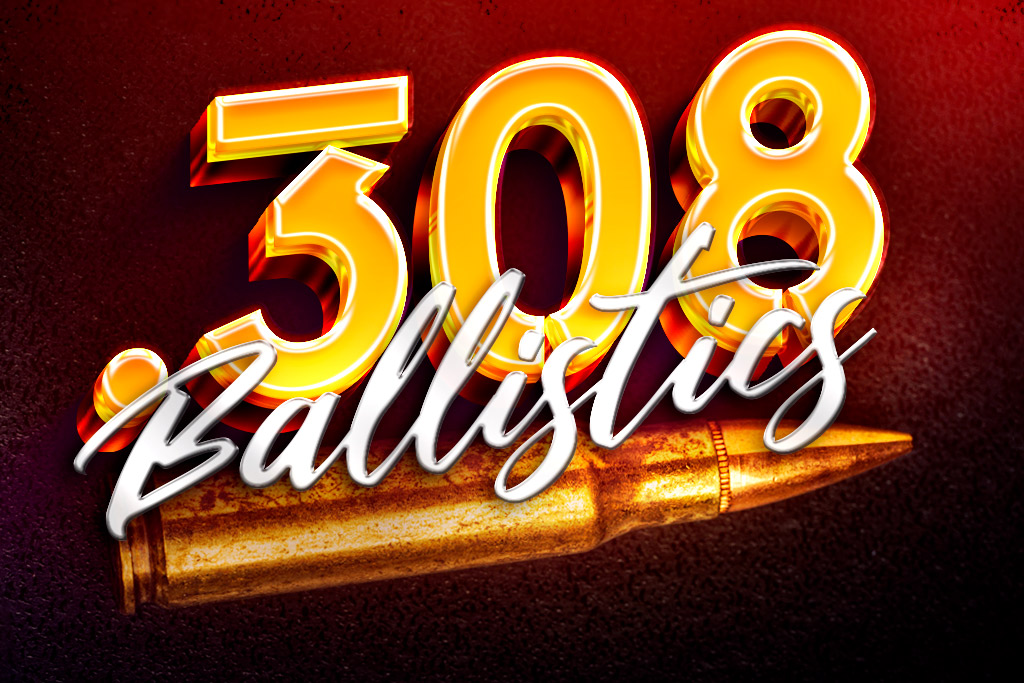
The versatility of the .308 Win often creates a lot of questions for new gun owners. Is the round underpowered, or overpowered? What’s the best bullet grain weight and its effective range? This article will give you an introduction to .308 ballistics as we talk velocity, drop rate, and more.
Let’s begin with the .308’s resume. Military snipers, big game hunters, competition shooters, and even home defenders rely on the .308 Win cartridge. It’s not the most powerful centerfire round, but it outpaces its larger peers in capability, and it doesn’t have overwhelming recoil.
In addition to the long-range bolt action models, the .308 is also common in semi-automatic chambers. This gives gun owners more options for building out a gun for their specific needs on a reliable platform. So what do .308 ballistics look like? We’ll answer that by starting at the beginning.
| Cartridge Specs | .308 Win |
|---|---|
| Parent Casing | .300 Savage |
| Bullet Diameter | .308″ |
| Neck Diameter | .3433″ |
| Base Diameter | .4709″ |
| Case Length | 2.015″ |
| Overall Length | 2.8″ |
| Grain Weight | 110gr-180gr |
| Max Pressure (SAMMI) | 62,000 PSI |
.308 VS 7.62.51mm (NATO)
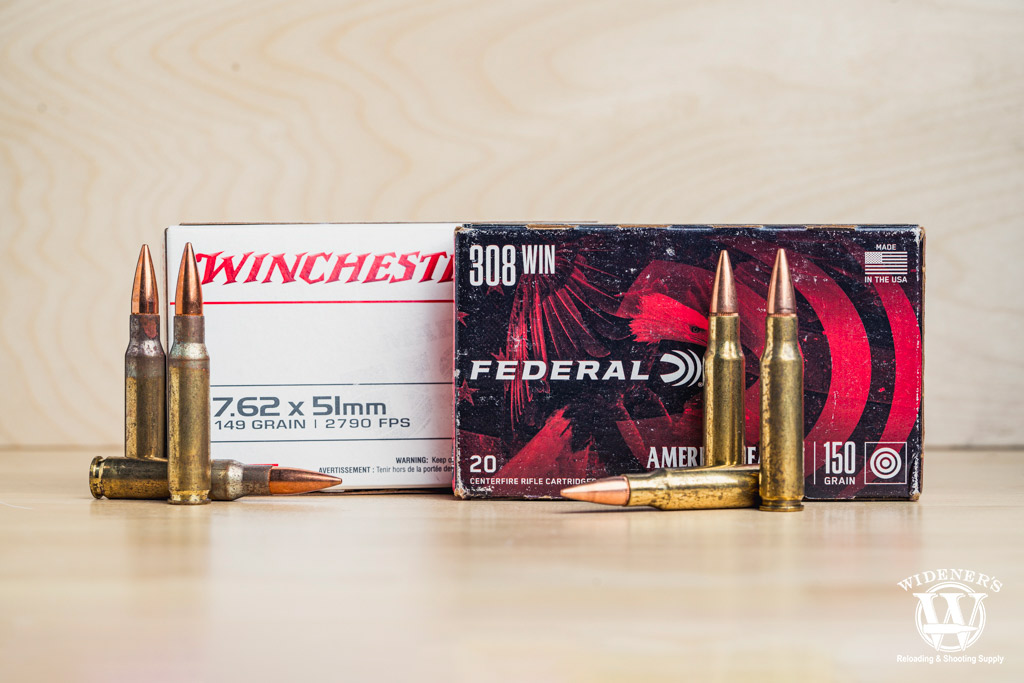
The .308 Win (Right) VS 7.62.51mm NATO (Left), it’s the same ammo, but different.
There’s often some confusion about .308 vs. 7.62 NATO, namely which came first? The 7.62 was being developed before the official release of the .308 Winchester. However, the .308 was marketed to civilians before the 7.62 became widespread in the military. The outer dimensions of each cartridge are the same, and there aren’t any major exterior factors that affect each cartridge’s appearance.
There’s one main difference: case thickness. The 7.62 NATO is slightly thicker than the .308. In addition to case thickness, people often point to differences in pressure; however, there’s a good argument that the pressure differences are almost negligible, as each round is measured differently, thus rendering different results. However, generally, the .308 generates slightly more pressure.
Also, the headspace in 7.62 rifles tends to be slightly larger than the headspace on .308 rifles. This extra headspace gives the military rifles a little more freedom for fast cycling; however, it can potentially create issues with .308 ammunition. The higher pressures and thinner brass might not have the support they need in the larger 7.62 chambers.
What’s the bottom line? You can always shoot 7.62 through .308 chambers, but you should double-check with the manufacturer of your rifle before shooting a .308 round through a 7.62 NATO chamber.
Alright, let’s get into the nitty-gritty on .308 ballistics.
Performance Of .308 Bullet Options

From 110gr, to over 200gr, the .308 Win offers a wide variety of bullet weights and types for various applications.
Let’s look at the performance of several different bullet weights. 125-grain, 150-grain, and 180-grain options are fairly popular for .308 Win. Obviously, you’ll get lower numbers with especially short barrels and slightly better numbers with longer barrels. Our numbers below are taken from a 24″ test barrel.
For 125-grain .308 ballistic tip hunting ammunition, you’re looking at a muzzle velocity of around 3100 FPS. You’re still sitting at 2,351 FPS at 300 yards, and finally dipping under the 2K mark at 1,900 FPS at 500 yards. These lighter-grain bullets may not hold on to as much energy at distances, but their accuracy is excellent. You’ll have no problem dropping deer, antelope, hogs, or predators at distance.
With the 150-grain, you’re getting about 2,800 FPS at the muzzle and 2,183 FPS out to 300 yards. This grain weight is generally used in FMJ training ammo, but you’ll also find hunting and target loads. Many consider this option to be the best of both worlds performance-wise.
The 180-grain .308 offers slightly less velocity at similar distances but carries nearly 1000 ft/lbs of energy out to 500 yards. If you need to reach out and touch something, violently, at a distance, it’s a great option. Deer fear the 180-grain SP bullet, it’s also been known to drop caribou, elk, and larger animals like a black bear.
.308 Ballistics Chart
With .308 ballistics, you’re getting good power in a usable package. When you can, get out to the range and test things for yourself. Give your ammunition the feel test. Guns have personalities and appetites, and some guns like different types of ammunition.
| Caliber | Bullet Type | Bullet Weight | Velocity (Muzzle) | Energy (Muzzle) | 100 Yards (Velocity/Energy) | 200 Yards (Velocity/Energy) | 300 Yards (Velocity/Energy) |
|---|---|---|---|---|---|---|---|
| .308 Win | Poly-Tip | 125gr | 3,100 FPS | 2,667 FT LBS | 2,836 FPS/2,232 FT LBS | 2,587 FPS/1,857 FT LBS | 2,351 FPS/1,534 FT LBS |
| .308 Win | FMJ | 150gr | 2,820 FPS | 2,648 FT LBS | 2,597 FPS/2,246 FT LBS | 2,385 FPS/1,894 FT LBS | 2,183 FPS/1,586 FT LBS |
| .308 Win | SP | 180gr | 2,600 FPS | 2,701 FT LBS | 2,427 FPS/2,354 FT LBS | 2,260 FPS/2,042 FT LBS | 2,101 FPS/1,763 FT LBS |
.308 Ballistics: Effective Range
Whenever we talk about effective range, we should note that the answer is relative to the rifle, bullet, and shooter. An effective range for a professional might be impossible for the average weekend shooter. That being said, most consider the .308 Win to be an effective round out to the 500-yard range. However, there have been many documented uses of the caliber at 1,000 yards and beyond.
The .308 is a relatively heavy bullet, so it maintains a fair amount of energy and good stability even though it loses some velocity at distances. At 500 yards, the 150gr FMJ has a velocity of 1,808 FPS, and an energy of 1,089 FT LBS. In comparison, the 180gr SP has a velocity of 1,800 FPS, and an energy of 1,296 FT LBS, at the same distance. Of course, hitting targets at those distances comes at a reduced rate of accuracy and a huge bullet drop.
With a good scope, you’ll have no problem with the .308 at 300 yards and even pushing out to 500 yards. With that said, you’ll need to do a lot of practice to become “effective” at those ranges and beyond.
.308 Bullet Drop At 500 yards & 1,000 yards
If you’re shooting within 200 yards, the .308 runs pretty flat. Not as flat as .223/5.56, but good for a .30 caliber bullet. Some people think the bullet rises within those distances; however, this is simply due to the muzzle pointing slightly upward, creating a trajectory.
With a 150gr FMJ bullet at 500 yards, you’re looking at about 47.2 inches or almost four feet of drop. With a 180gr SP bullet at 500 yards, you’re looking at about 51.9 inches or over four feet of drop. At 1,000 yards, the .308 drops about 400 inches or about thirty feet. You’ll see slight variations with different rounds and barrel lengths.
The thing to remember is that bullets drop at an exponentially increasing rate. That means that if a bullet drop is 2 inches at 200 yards, it’s not 4 inches at 400 yards (it’s more like 26 inches).
Now that we’ve talked about .308 ballistics and seen some charts, let’s look at the main benefits of the .308.
Benefits Of The .308 Win
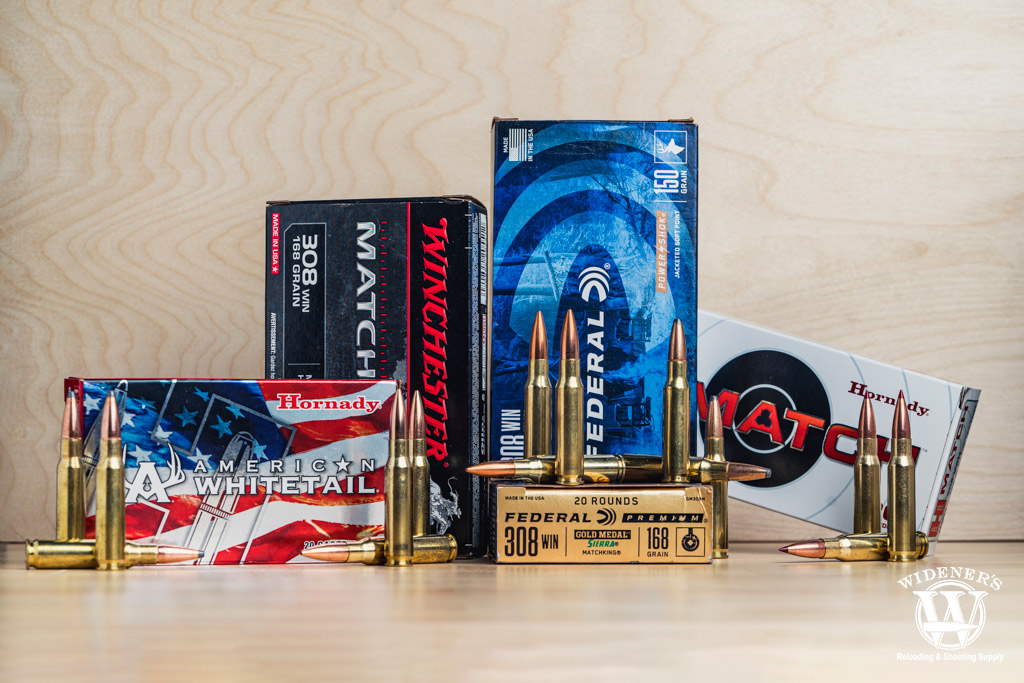
Why choose .308 Win? It’s adaptable, available, cost-efficient, and has excellent ballistics.
The .308 is popular. Like anything popular (people, politicians, etc.), there are some fanboys and some haters. Is there anything to hate about the .308? Not really. However, since the .308 is a jack-of-all-trades, some people will argue that it doesn’t fit their specific purposes.
Here are the main benefits of the .308:
- Adaptable. The .308’s versatility is number one. You can shoot 7.62 NATO or .308 Win. You can buy long guns, short guns, semi-autos, and bolt actions. You can find light bullets for small-game and powerful rounds for big-game. The list could go on.
- Availability. You can find the ammunition for the .308 in your big box stores and rural sports shops.
- Inexpensive. Compared to other types of ammunition, you can probably afford to stash away some high-end .308 rounds while still having a few boxes of standard FMJ for target practice.
- Ballistic capability. The .308 comes pretty close to the .30-06 in terms of power. However, the .308 has the advantage of being a shorter cartridge with less kick.
Let’s review the key takeaways.
.308 Ballistics: Higher Power
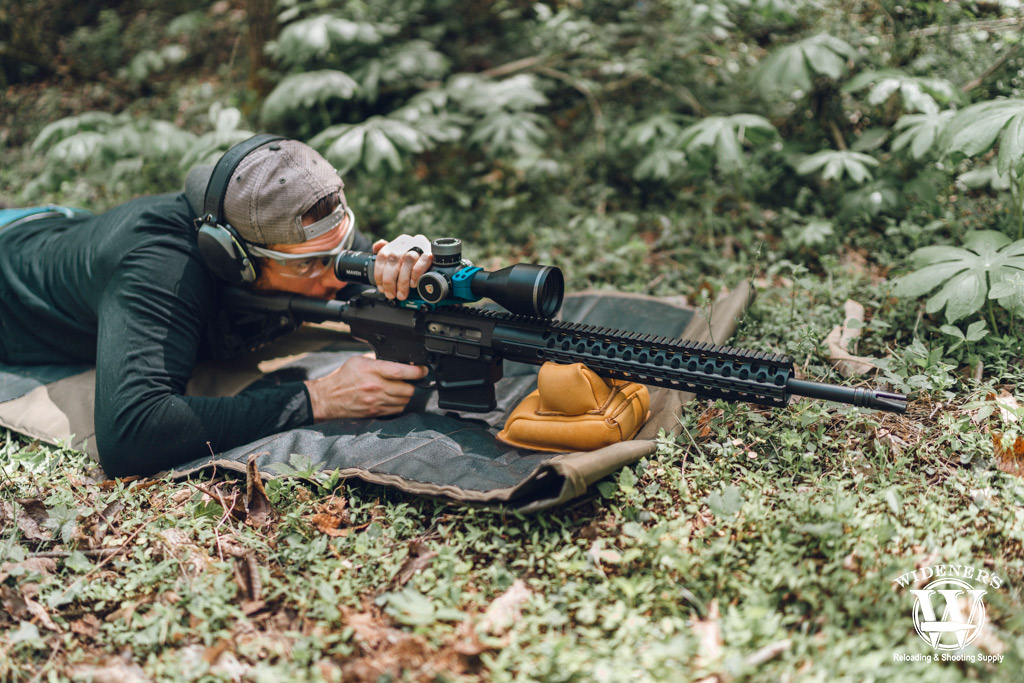
The .308 Win excels at big game, competition target, and precision tactical applications.
You could describe the .308 ballistics as a medium to high power round. It all depends on your frame of reference. It’s not going to have the power of the .30-06, or the range of the .300 Win Mag. However, it’s an excellent performing .30 caliber option. In fact, for many gun owners in need of a do-it-all centerfire caliber, it’s the best option available. While it might not be the top performer in all categories, the .308 gives many larger (and smaller) rounds a run for their money.
There are tons of ammo options for it, even in surplus. You can reload it and customize it to fit your needs. There are multiple, battle-proven rifle platforms already chambered for it. You won’t meet a hunter who’s failed to put meat on the table while using it. Here’s a way to think about it: if there were Firearm Olympics, the .308 Win would have about thirty silver medals, while other .30 caliber options might only have a single gold.
Once you understand the .308 Win, its abilities, and its intended purpose, its popularity in the market makes a lot of sense. Be sure to check out our article comparing .223 VS 308 ammo here.


